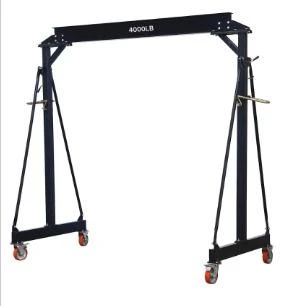Magnetic Lifting Solutions for Steel Plate Magnets for Efficient Handling
The Role of Plate Magnets in Lifting Steel
In the industrial world, handling heavy materials like steel presents numerous challenges. One of the most effective solutions for lifting and maneuvering steel is the utilization of plate magnets. These specialized magnets offer a reliable, efficient method to handle ferrous metals, making them invaluable in various sectors, including construction, manufacturing, and shipping. Understanding the functionality, benefits, and applications of plate magnets can help industries optimize their material handling processes.
What Are Plate Magnets?
Plate magnets are robust magnetic devices designed to lift and handle ferrous materials. They consist of a rectangular or square plate embedded with powerful magnets, usually made from materials like ceramic or neodymium. When positioned over a steel object, these magnets generate a magnetic field that securely attaches to the item, enabling it to be lifted and moved with ease. The effectiveness of a plate magnet depends on its magnetic strength, design, and the thickness of the material it’s lifting.
How Do Plate Magnets Work?
The operation of plate magnets is relatively straightforward. When placed on a ferrous surface, the magnetic force creates a bond strong enough to lift the material without slipping. This lifting mechanism is not only effortless but allows for precise control over the movement of steel sheets or components. Additionally, many plate magnets are designed with a flip lever or similar mechanism that allows operators to easily release the steel item once it has been transported to its desired location.
The design of plate magnets also plays a crucial role in their efficiency. Many magnets come with an optimized surface area to enhance magnetic contact. Their configurations can cater to various shapes and thicknesses, allowing businesses to choose a plate magnet that best fits their lifting requirements.
Advantages of Using Plate Magnets
1. Safety and Efficiency Using plate magnets reduces the risk of injury associated with manual lifting. Workers can easily manipulate heavy steel pieces without the strain or danger of dropping materials.
2. Increased Productivity Plate magnets can significantly speed up the loading and unloading processes in warehouses. Their ability to quickly attach and detach from steel items means less downtime, leading to improved operational efficiency.
3. Versatility Plate magnets can handle a variety of steel products, whether they are sheet metal, pipes, or beams. This flexibility makes them suitable for numerous applications across different industries.
plate magnets for lifting steel

4. Reduced Material Damage Unlike other lifting methods such as hooks or slings, plate magnets do not damage the material being lifted. This is particularly important in industries where aesthetics or precision are paramount.
5. Low Maintenance Plate magnets are designed to withstand harsh industrial environments. Their simple construction requires minimal maintenance compared to mechanical lifting devices, reducing long-term operational costs.
Applications of Plate Magnets
Plate magnets are utilized in various industrial applications, including
- Manufacturing In factories, plate magnets are used to move steel components along an assembly line, enhancing production efficiency. - Construction Sites Workers use plate magnets to lift heavy steel beams and panels, facilitating quicker construction times.
- Shipping and Warehousing In logistics, these magnets enable automated systems to load and unload steel products efficiently, reducing labor costs and increasing safety.
- Recycling Facilities Plate magnets play a crucial role in the recycling industry, where they help separate ferrous metals from non-ferrous materials.
- Automotive In auto manufacturing, plate magnets assist in lifting and positioning metal parts, ensuring precise assembly.
Conclusion
Plate magnets have revolutionized the way industries handle ferrous materials, providing a safer, more efficient alternative to traditional lifting methods. Their robust design, coupled with their ability to handle various steel shapes and sizes, makes them indispensable in today’s manufacturing and construction environments. As industries continue to innovate and prioritize safety and efficiency, the use of plate magnets will likely expand, underscoring their vital role in modern material handling solutions. By adopting these tools, companies can not only enhance their operational capabilities but also ensure a safer working environment for their employees.
-
Unlock Seamless Relocation with Our Heavy Equipment Moving ExpertiseNewsJun.06,2025
-
Unleash Unrivaled Flexibility with Our Adjustable Gantry CraneNewsJun.06,2025
-
Unleash Heavy-Duty Efficiency with Our Industrial Gantry Crane SolutionsNewsJun.06,2025
-
Revolutionize Steel Handling with Our Magnetic Lifter RangeNewsJun.06,2025
-
Master Equipment Mobility with Premium Machinery Mover SolutionsNewsJun.06,2025
-
Elevate Your Material Handling with Magnetic Lifter TechnologyNewsJun.06,2025
-
YS Permanent Lifting Magnets: The Smarter Way to Handle SteelNewsMay.22,2025
